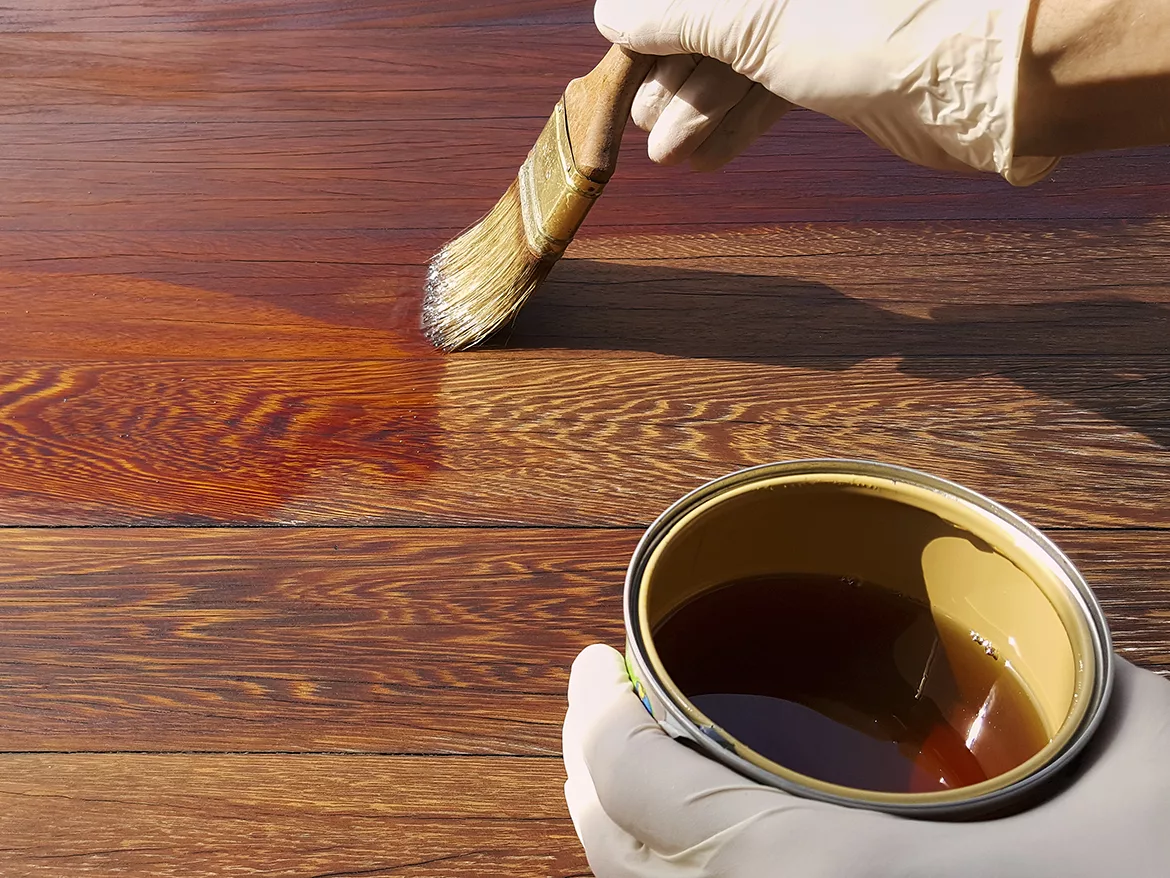A Color Revolution in Wood

As demand for on-trend colors continues to grow across industries, it’s important for coatings and finishing professionals to stay prepared.
Nowhere is this truer than within the realm of architectural wood coatings and finishes. Many of today’s consumers and design professionals are seeking to transform living spaces with bold design choices, while harnessing natural textures. Within this environment, wood is playing an increasingly large role. For finishers and coatings professionals, it’s important to stay up to date on how the right stains, coatings, and finishes can help you meet today’s consumer wants and desires.
With this in mind, here’s a look at which color trends are influencing the design and production of architectural wood products, and why the right coating and finishing technology is essential to bringing those trends to life in any architectural wood application.
Highlighting Wood’s Natural Beauty
Over recent years, we’ve seen colors derived from nature appear more frequently on showroom floors in both commercial and residential categories. Why natural colors? Every piece of wood is unique, and that has proven to be a characteristic that consumers increasingly want to celebrate. The desire to show off the natural beauty of wood grain is reflected in some of the biggest trends we’ve seen recently.
For example, brown has become the most popular finish color for both home furnishings and architectural accents to add a sense of both depth and luxury. Chocolate browns and darker tones like ebony and espresso are making a return now that grays are on their way out. Mid-tone-colored finishes are a close second to brown and include the popular mushroom and fawn colors. Mid-tones are increasingly chosen for furniture and cabinetry for their ability to pair well with accent colors and earth tones.
Elsewhere, interior spaces are increasingly conceptualized as refuges from the constant tug of technological change. Because of this, there has been a shift to a simpler, more organic design that contributes to a sense of serenity. ‘Barely there’ finishes that complement authentic wood textures can help to magnify nature’s imperfections.
Simultaneously, physical texture only continues to grow in popularity. Distressed rustic finishes, rescued materials and geometric patterns are leading the way, with charred finishes not too far behind. And as the industry shifts from cooler to warmer tones, one-of-a-kind textural finishes can contribute to truly unique interior environments.
Finally, minimalistic and streamlined, bleached finishes draw inspiration from classic Scandinavian design and can serve as a great backdrop for airy whites, neutrals, or unexpected pops of color. Warmer blonde finishes are gaining in popularity as well, as consumers look to bring a sense of subtle lightness and calmness into the home.
There will be a growing new desire to comprehensively incorporate wood into interior spaces. One reason is that wood is regarded as an ideal building material due to its renewable nature and carbon-sequestering benefits. As environmental concerns increase, the use of sustainable and recycled materials is going to widen in scope. Many of today’s consumers desire lower-maintenance products in their homes and workplaces, and for those products to be made of authentic materials. And post-pandemic, we expect to see the continued consolidation of commercial spaces – hybrid work environments will become more intentionally designed, welcoming spaces to collaborate will benefit from natural touches. Simultaneously, recycled materials have come to be associated with a mulchy surface effect which, when translated to color, is very desaturated and soft. These desaturated colors fit the attitude of being one with nature, are great with other colors and will work well with indoor or outdoor environments.
Why the Right Coatings Technology is Essential
Being aware of what’s trending is just one part of satisfying your customer base. To bring any of the discussed trends to life, high-quality stains and finishes that complement wood’s inherent aesthetic are a necessity to maintaining customer satisfaction and efficient production.
Kitchen cabinetry provides a good example—it’s a high-touch application that is constantly coming into human contact. Excellent finishing properties are essential to provide a desirable tactile experience. Meanwhile, end-use durability is of the utmost importance. High levels of resistance to blocking, marring, staining, and printing are critical performance properties here. And imbuing your wood products with these properties involves matching the right coating technology with your substrate—a particular finish may react differently with one species of wood than another, requiring specificity in your selection and finishing processes.
Elsewhere, when capitalizing on color trends, consistency and repeatability is of utmost importance. Your customers want to know exactly what they’re getting, and they want the confidence that your products will match color-for-color every time. But offering color variety can be an operational challenge, requiring you to either hold onto excess inventory or to rely on a supplier who can provide consistent, repeatable color coatings that match the pace of your business.
Finally, determining your ideal finishing technology must account not just for these challenges, but for your business. Consider that many finishers may offer more than just one wood product – your product arsenal could include furniture, cabinetry, flooring, and other pieces. If you keep your eye on color trends, you can achieve greater harmony and continuity within your own portfolio of products. Creating color harmony is an effective way to pull all the segments together in one space, and wood product manufacturers can gain the opportunity to deliver complete solutions for their customers. What’s more, when product lines are designed to complement one another, they have the potential to build confidence and increase customer satisfaction. Consumers want to know that these products will coordinate and work together in their space – and they’ll appreciate a supplier who makes it all the easier for them.
Indeed, delivering on today’s color demands requires a balance of technical application expertise and a keen sense of design – and working with the right coatings technology supplier can be beneficial here. From providing insights into the latest color and finish trends, to close collaboration to help define your own proprietary finishes and how to bring them to life in production, an ideal finish and coatings supplier should be able to help you enhance the natural beauty of wood, and set yourself apart from the competition.
Looking for a reprint of this article?
From high-res PDFs to custom plaques, order your copy today!





